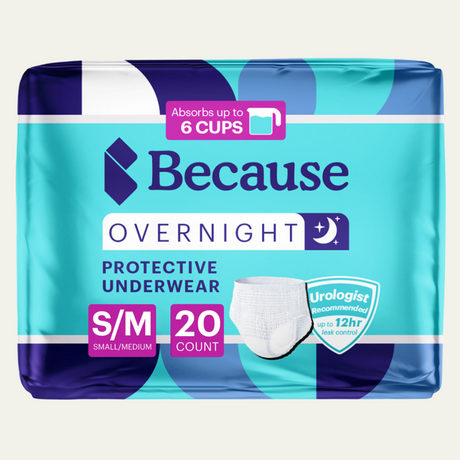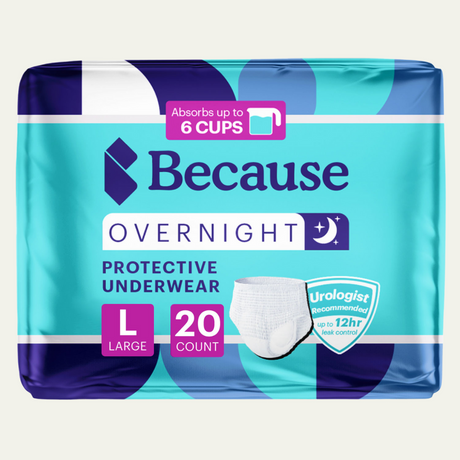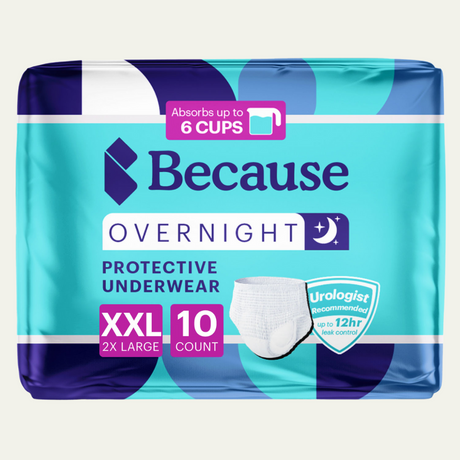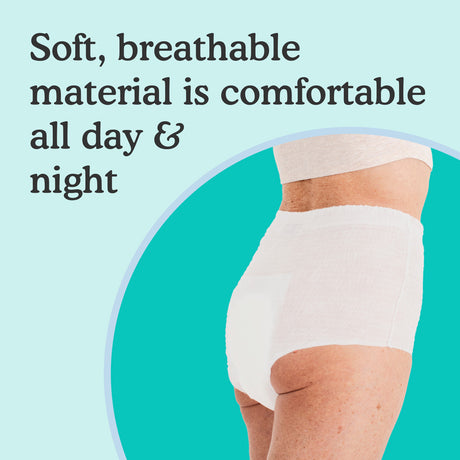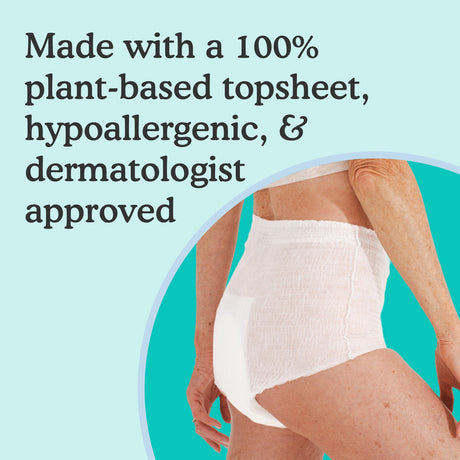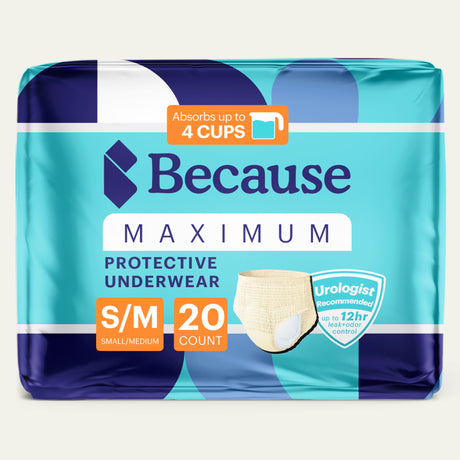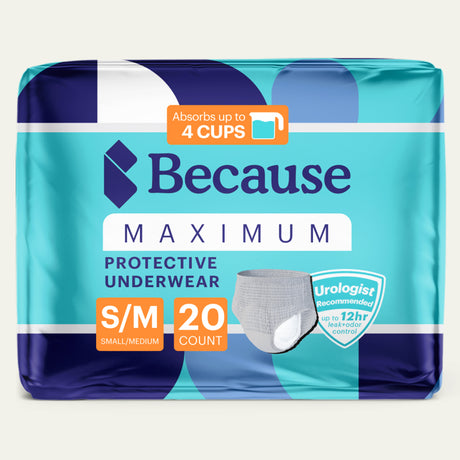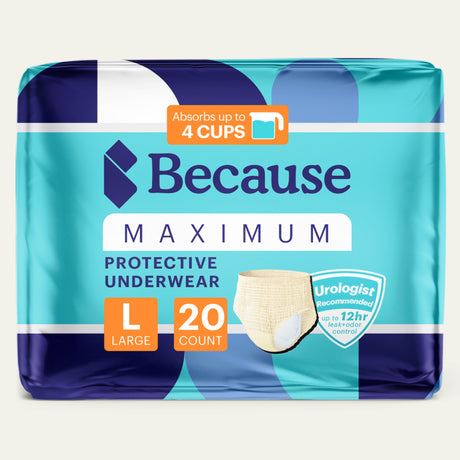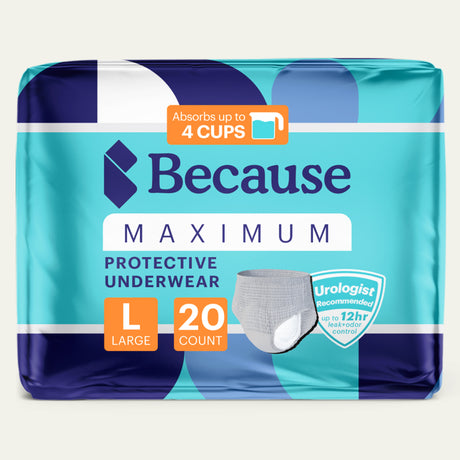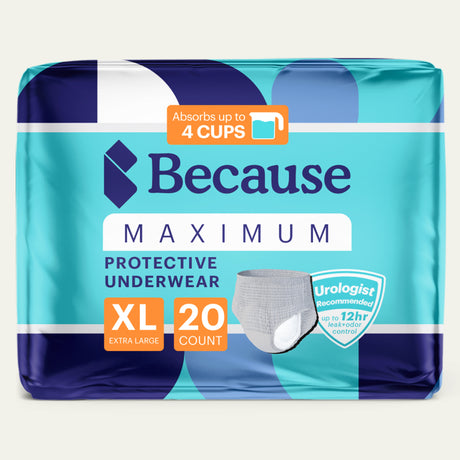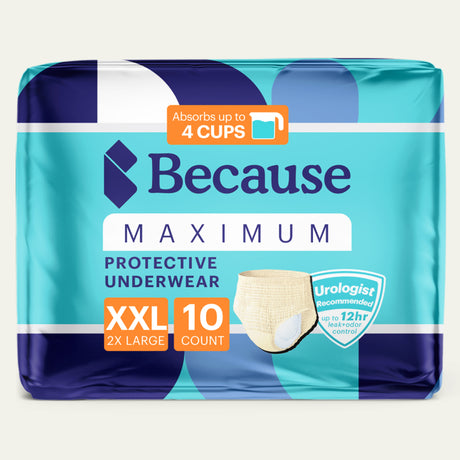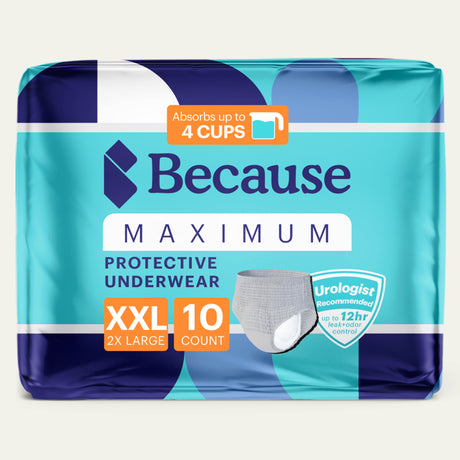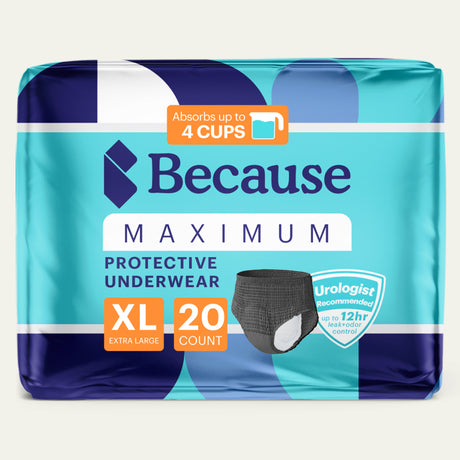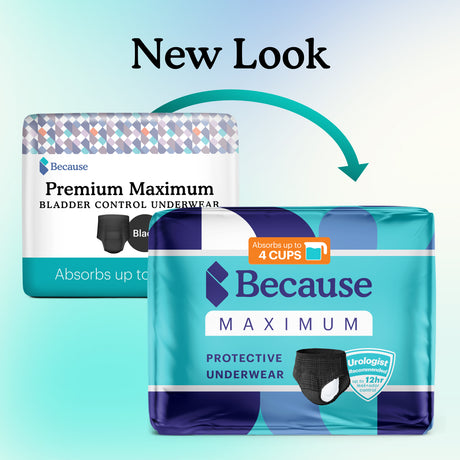Managing incontinence can be challenging, especially when it comes to changing underwear discreetly in public or at work. Many people struggle with the logistics of removing and replacing incontinence underwear without the hassle of taking off their pants. In this blog, we will provide you with practical tips and step-by-step instructions to make this process as smooth and discreet as possible, helping you maintain your confidence and comfort throughout the day.
Essential Supplies for a Quick Change
Having the right supplies on hand is crucial for a quick and discreet change of incontinence underwear without removing your pants. To efficiently change your protective underwear, ensure you have the following supplies:
- Fresh Incontinence Products: You'll need clean incontinence underwear to change into. Depending on your level of leakage, you might consider using a pad or guard for minor leaks.
- Cleansing Supplies: After a leak, it's important to clean the area quickly and thoroughly to reduce skin irritation and damage. Carry wipes or no-rinse spray to discreetly clean up before changing into a new product.
- Disposable Bags: Adult diapers are unlikely to fit in menstrual disposal bins in women's restrooms, and men's restrooms often lack in-stall trash cans. Bring discreet, opaque, odor-proof disposal bags to transport soiled products until you can dispose of them properly.
- Odor Control: If you experience fecal incontinence, you might feel self-conscious about odors. Consider carrying an odor-removing room spray to freshen the air in the restroom or stall you’re using.
- Extra Leak Protection: Changing a fully soiled product can sometimes cause leaks or seepage. Pack an incontinence underpad to place between your legs and over your pants to protect your clothes from any escaping liquid.
Step-by-Step Guide to Changing Incontinence Underwear
Breaking down the steps of changing from a soiled adult diaper to a clean one can help you gain a sense of control and boost your confidence. In this section, we will provide step-by-step instructions, from preparation to disposal, to help you manage changes confidently and efficiently.
Preparing for the Change
Finding a private space is the first step in preparing to change your diaper discreetly and comfortably. If available, a handicap stall or family bathroom is ideal as they offer more space and privacy compared to individual stalls or shared bathrooms. Once you've secured a private spot, gather all your necessary supplies beforehand rather than waiting until the moment you need them.
Having your fresh incontinence products, cleansing supplies, disposable bags, odor control spray, and extra leak protection ready can make the process quicker, easier, and less stressful, allowing you to manage the change with confidence and efficiency. You don’t want to be digging through your bag looking for what you need while you’re trying to change.
Removing the Used Underwear
Adult diapers mainly come in two forms: tabbed and pull-ups. Tabbed diapers are easier to change due to the adjustable side-tabs that can be unfastened to remove the underwear, but many people find pull-up underwear more comfortable and form-fitting. Pull-up adult diapers usually come with tearable seams to allow you to remove them while still wearing your pants. No matter which type of underwear you choose, these steps can help you manage the change:
Sitting:
- Prepare: While standing, pull your pants down slightly to have enough mobility to remove your diaper.
- Sit Down: Sit down on the toilet. (Optional: place an incontinence underpad over your pants to protect from any leaks while removing your diaper.)
- Remove Diaper: Carefully remove the tabs or tear the seam from one side.
- Slide Out: Slide your leg out of the leg hole and repeat on the other side.
- Dispose: Hold the diaper right side up with the sides and top pinched together and carefully place it in your disposable bag, tie the bag closed, and set it aside.
Standing:
- Prepare: Pull your pants down slightly to have enough mobility to remove your diaper. (Optional: place an incontinence underpad over your pants to protect from any leaks while removing your diaper.)
- Remove Diaper: Carefully remove the tabs or tear the seam from one side.
- Slide Out: Slide your leg out of the leg hole and repeat on the other side.
- Dispose: Hold the diaper right side up with the sides and top pinched together and carefully place it in your disposable bag, tie the bag closed, and set it aside.
Clean Up:
- Clean Skin: Use sensitive-skin friendly wipes to clean your skin.
- Dry Skin: Dry your skin thoroughly. (Optional: apply sensitive-skin moisturizer and wait until the skin is dry to move on to the next step.)
- Apply Barrier Cream: Apply barrier cream to prevent skin irritation.
Putting on a New Diaper:
- Unpack New Product: Unpack your new incontinence product.
- Put On: Either pull it up like regular underwear or place it between your legs and adjust with tabs.
- Pack Up: Pack all of your supplies back up and dispose of your soiled product in a large trash can at your convenience.
Tips for a Smooth and Discreet Change
To ensure a smooth and discreet change of your incontinence underwear, there are several practical tips you can follow. These strategies will help you manage the process efficiently and confidently, even in public restrooms.
Practice at Home
Practicing at home can help you master quick changes, prepare for accidents, and develop confidence in managing incontinence discreetly. By rehearsing the steps in a comfortable environment, you'll become more efficient and less stressed during actual changes, ensuring you're ready for any situation that may arise. This practice also allows you to identify and address any difficulties, making the process smoother and more familiar when you're away from home.
Wearing loose-fitting pants and dark clothing can significantly aid in discreet changes by providing more space to maneuver and minimizing the visibility of any leaks or bulges. Loose pants make it easier to pull down and adjust your incontinence underwear without completely undressing. Dark clothing helps conceal any accidental spills or leaks that might occur during the change.
Additionally, carrying a purse for supplies if you're a woman, or a messenger bag or backpack if you're a man, ensures you have all necessary items at hand. These bags can discreetly store your fresh incontinence products, wipes, and disposal bags, making the process more efficient and less conspicuous.
Common Mistakes to Avoid
Avoiding common mistakes can make the process of changing incontinence underwear smoother and more discreet. One common mistake is rushing the process, which can lead to spills or incomplete cleaning. Ensure you take your time to change properly. Another mistake is forgetting essential supplies, which can leave you unprepared and stressed. Always check that you have everything you need before starting the change. Additionally, not practicing beforehand can make the change more difficult and time-consuming. Practicing at home can help you become more efficient and confident in managing changes in public settings.
Additional Resources and Support
Using high-quality incontinence products can greatly simplify the changing process. These products often feature advanced absorbent materials, secure fastenings, and seams designed for easy removal, making changing and replacement discreet and effortless. Investing in reliable, comfortable products can reduce the risk of leaks and ensure you feel more confident during changes. Additionally, using booster pads can increase the absorbency of your incontinence underwear, reducing the frequency of changes and providing extended protection.
Support groups can be invaluable resources for discovering additional tips and strategies. Engaging with others who face similar challenges allows you to share experiences, learn new techniques, and receive emotional support. These communities can offer practical advice that you might not find elsewhere, making your daily management of incontinence more manageable.
If you're looking for a private support group, join one of ours today!
Join our private women's support group
Join our private men's support group
Seeking professional advice and assistance is also crucial. Healthcare providers can offer personalized recommendations based on your specific needs, help you choose the most suitable products, and provide guidance on maintaining skin health and preventing irritation. Professional support ensures that you are managing your condition effectively and can improve your overall quality of life.


